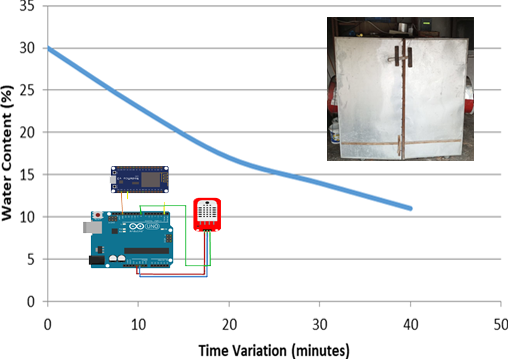Utilization of IoT and biomass energy for innovation in cracker production
DOI:
https://doi.org/10.59190/stc.v6i1.334Keywords:
Biomass, Crackers, Internet of Things, Processing, Renewable EnergyAbstract
This study explores an innovation based on IoT and biomass energy for the efficient production of processed food, specifically crackers. Biomass energy, derived from plant materials, is utilized to generate heat in the processing room. This innovation significantly reduces the processing time for crackers to just 2 hours, compared to the conventional method that requires 2 days of sun-drying. The biomass energy source used in this study includes rambutan tree trunks, which not only provide efficient heat but also impart a pleasant aroma to the final product. The research employs a direct experimental method to design and implement this technology in industrial settings. The primary ingredient for the crackers is cassava, mixed with fish, shrimp, and jengkol. The heat energy generated from the combustion of rambutan tree trunks is effectively utilized in the combustion chamber. Observations indicate that the crackers produced are of high quality, with appealing color and fragrance, making them suitable for market distribution. This innovation demonstrates the potential of combining IoT and biomass energy to enhance food processing efficiency and product quality.

Downloads
Published
How to Cite
Issue
Section
License
Copyright (c) 2025 Juandi Muhammad, Tengku Emrinaldi, Hendro Ekwarso, Arifudin Arifudin, Joko Risanto, Yusri Yusri, Budijono Budijono, Kemal Kemal, Novita Rany, Erzan Syah

This work is licensed under a Creative Commons Attribution 4.0 International License.










